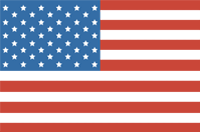“You call that chickening out?” Donald Trump asked a reporter on Wednesday. The question was rhetorical.
The US President had been pressed for a response to Wall Street’s emerging belief in the “TACO trade” — a theory first outlined by Financial Times columnist Robert Armstrong. The acronym stands for “Trump Always Chickens Out”, and is intended to explain why markets rally when the President cuts trade deals. On 2 May, Armstrong explained that the “recent rally has a lot to do with markets realising that the US administration does not have a very high tolerance for market and economic pressure, and will be quick to back off when tariffs cause pain”.
The label stuck. By Tuesday, after Trump delayed a 50% tariff on the European Union, a New York Times headline read: “Stocks Rally on the ‘TACO Trade’”. Asked about the coinage, Trump unloaded on the reporter with a two-minute response. “It’s called negotiation — you set a number,” he replied, concluding: “Don’t ever say what you said. That’s a nasty question.” Since then, a US court has ruled that the President “exceeded his authority” when he implemented global tariffs. That ruling has itself now been temporarily halted on appeal.
But TACO traders and Trump can both be correct. It’s a question of semantics. The President can’t set tariff rates high enough to frighten another country into negotiating without, at some point, being willing to land on a lower number. The exaggerated high number is meant to make the lower, actual target seem like a compromise. This undermines the pejorative description of Trump “chickening out”, unless one believes he’s caving without accomplishing his negotiation goals for fear of “market and economic pressure”, as Armstrong put it.
Is Trump chickening out or successfully playing hardball? The answer really depends on what his goal is and whether it’s being met. When he declared a national emergency on “Liberation Day”, that declaration was predicated on “underlying conditions, including a lack of reciprocity in our bilateral trade relationships, disparate tariff rates and non-tariff barriers, and US trading partners’ economic policies that suppress domestic wages and consumption”. On this basis, it’s too early to tell — but Republicans are putting their hopes in the “One Big, Beautiful Bill” to couple Trump’s sticks with some carrots in their efforts to spur onshoring.
It’s also hard to say that a man who implemented and maintained a 10% unilateral tariff on all nations is chickening out. That rate does not appear to be going anywhere for the foreseeable future. “Trump’s Threatened Tariffs Are So Large, 10% Feels Like a Relief,” read a NYT headline earlier this month.
What’s more, the White House can point to a handful of examples which show Trump’s tariff negotiations successfully persuading manufacturers to invest in heavier domestic operations. The evening after Liberation Day, Reuters reported that General Motors was increasing its truck production in Indiana as a result of Trump’s tariffs.
There’s no doubt the policy will create some good jobs in the short term. But over the long run, the sheer volatility of a president imposing or lifting sweeping tariffs at will could prompt many businesses to shift investment elsewhere, ultimately doing more harm than good. That unpredictability makes it hard to forecast what will happen once the current pause ends. Even then, experts will face a complex task disentangling the economic gains from the losses.
In the end, calling Trump’s moves “chickening out” may miss the point. If the goal is to use bold threats to extract better trade terms without triggering full-scale economic fallout, then backing off at the right moment isn’t weakness — it’s strategy. Critics may scoff at the theatrics, but markets and foreign negotiators alike are paying attention. For all the noise, Trump may be doing exactly what he set out to do: keeping America’s leverage high and its options open.










Join the discussion
Join like minded readers that support our journalism by becoming a paid subscriber
To join the discussion in the comments, become a paid subscriber.
Join like minded readers that support our journalism, read unlimited articles and enjoy other subscriber-only benefits.
Subscribe